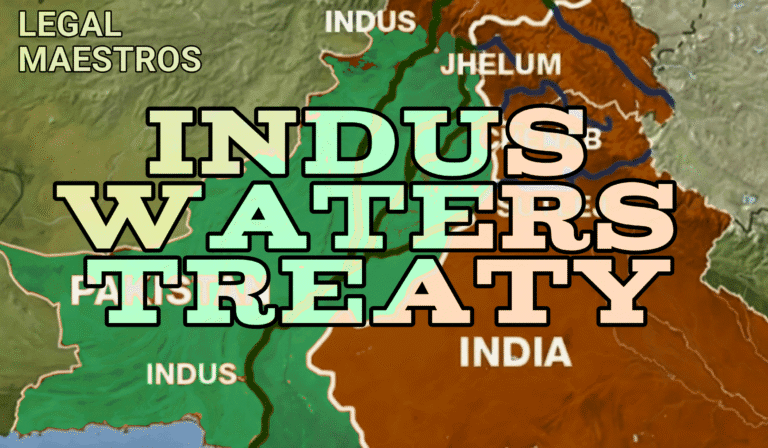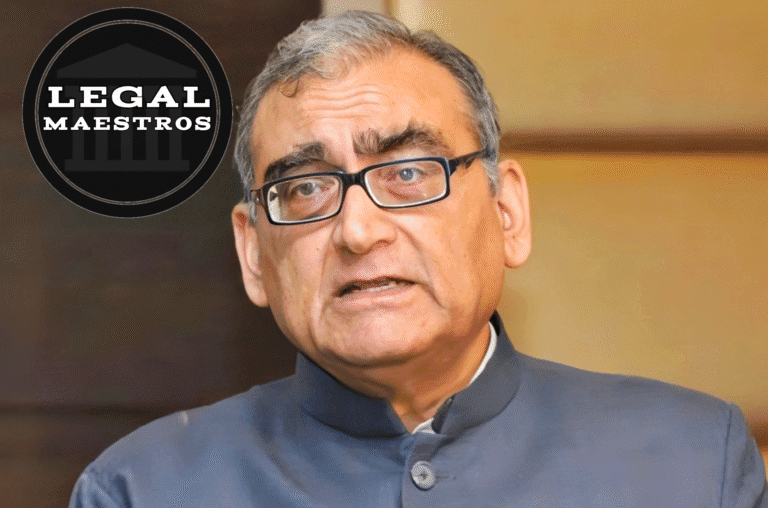
Established to promote world monetary cooperation and offer nations with balance-of-payments issues temporary financial aid, the International Monetary Fund From temporary financial shortages to more long-term structural flaws, the IMF has changed its loan instruments throughout the years to handle various issues.
Its major goal is still to make sure member nations can bring stability back without using policies meant to damage the world economy.
Requesting IMF assistance puts a country into a formal program combining policy direction with financial resources. This alliance is meant to help with macroeconomic adjustment and safeguard the international financial system as well as the borrowing nation.
For any queries or to publish an article or post or advertisement on our platform, do call at +91 6377460764 or email us at contact@legalmaestros.com.
Clarifying IMF Loan Facilities
There are various ways the IMF funds projects. For immediate balance-of-payments needs, stand-by agreements provide temporary assistance. Focused on deeper structural improvements and economic resilience, Extended Fund Facilities cover several years.
The most recent tool the IMF has created, the Resilience and Sustainability Facility tackles issues including structural sustainability and climatic vulnerability. Every institution carries a comprehensive documentation of financial and economic policies.
In return for fictitious disbursements, these define the changes a nation must implement—such as fiscal consolidation, central bank independence, or social spending protections. Through frequent assessments, the IMF tracks development; funds are provided only if important targets are reached.
For any queries or to publish an article or post or advertisement on our platform, do call at +91 6377460764 or email us at contact@legalmaestros.com.
IMF Loan Eligibility Standards
A nation must first be a member of the Fund, a position held by all UN member states, before it may apply for IMF loans. The most basic need is proof of a balance-of- payments need, therefore the government cannot fulfill its foreign payment commitments without outside assistance.
The IMF determines whether external debt servicing is unsustainable, foreign reserves are running low, or the nation’s currency is under pressure. Not less crucial is the nation’s capacity and will to carry out remedial actions.
The IMF looks at the government’s dedication to measures meant to bring about financial institution strengthening, control of inflation, and fiscal recovery.
For any queries or to publish an article or post or advertisement on our platform, do call at +91 6377460764 or email us at contact@legalmaestros.com.
Ultimately, the nation must show that it can pay back the loan using future foreign exchange revenues, therefore guaranteeing a temporary arrangement.
The economic context of Pakistan
For decades Pakistan has experienced ongoing internal and foreign imbalances. Government budgets have been pressured by high inflation, regular changes in value of money, and low tax collections.
While geopolitics and natural disasters have hampered development, recurrent energy subsidies and security spending have expanded deficits. One of the Fund’s most regular borrowers, Pakistan has been pushed to seek IMF support repeatedly by these difficulties.
For any queries or to publish an article or post or advertisement on our platform, do call at +91 6377460764 or email us at contact@legalmaestros.com.
Negotiating a new Extended Fund Facility to stabilize reserves, lower inflation, and regain investor confidence by mid-2024, Pakistan was The agreement captures Pakistan’s acceptance of IMF-prescribed policy measures as well as its pressing funding need.
Information on the $7 Billion Agreement
Pakistan and the IMF settled on a 37-month Extended Fund Facility worth $7 billion in September 2024. Under this setup, Pakistan will get the money in periodic payments according to milestone assessments.
The first tranche gave quick relief to increase foreign reserves. Tranche after that depend on advancement in structural changes and fiscal consolidation. Important components are widening the tax base, reducing energy subsidies, and improving central bank policy frameworks.
For any queries or to publish an article or post or advertisement on our platform, do call at +91 6377460764 or email us at contact@legalmaestros.com.
The Resilience and Sustainability Facility of the IMF is also included into the program and provides extra funds for social safety nets and climate adaption. These components taken together try to solve both immediate stabilization and longer-term sustainable development.
Understandings of Program Conditions
The agreement’s main pillar is income mobilization, hence it stresses Pakistan promised to close gaps, modernize tax collecting, and raise compliance.
Reforms in the energy sector call for phase-out of untargeted subsidies and guarantees of cost-recovery.
For any queries or to publish an article or post or advertisement on our platform, do call at +91 6377460764 or email us at contact@legalmaestros.com.
Targeting inflation and creating suitable foreign exchange buffers will be the main priorities of monetary policy. Acknowledging the societal consequences of austerity policies, the IMF also mandates Pakistan to safeguard expenditure on education and health.
By means of quarterly evaluations, the Fund will evaluate Pakistan’s compliance to structural benchmarks including the enactment of important legislation and quantitative performance criteria—such as budget deficit targets. Ignoring these obligations can cause program reviews or postpone payments.
Comparative analysis with other IMF initiatives
Similar Extended Fund Facilities have helped nations engulfed in severe economic crisis. Strict fiscal austerity and labor market reforms were part of Greece’s multi-year programs following the 2008 global financial crisis.
For any queries or to publish an article or post or advertisement on our platform, do call at +91 6377460764 or email us at contact@legalmaestros.com.
Argentina has often asked for IMF help; the standby arrangement for 2018 ties to austerity policies and currency stabilization.
The ongoing initiative of Ukraine combines anti-corruption and governance changes with financial help.
In every situation, the IMF strikes a compromise between the borrower’s urgent need for immediate finance and protections for the lender and the world economy.
For any queries or to publish an article or post or advertisement on our platform, do call at +91 6377460764 or email us at contact@legalmaestros.com.
Though country-specific program designs differ, the fundamental idea is that conditionality guarantees that financial aid results in long-lasting changes.
Difficulties and Objections
Political opposition to IMF projects is not unusual. Changes in subsidies could cause public demonstrations; revenue policies can challenge vested interests. Strong austerity, according to critics, can aggravate poverty and worsen recessionary effects.
Tough reforms have traditionally been difficult for Pakistan’s brittle political combinations to pass. Program aims can be thrown off by outside events as security shocks or unpredictable commodities prices.
For any queries or to publish an article or post or advertisement on our platform, do call at +91 6377460764 or email us at contact@legalmaestros.com.
Moreover, the emphasis of the IMF on macroeconomic stability sometimes ignores structural limitations such as low human development indices or labor market rigidity.
For Pakistan and other nations running programs, juggling social protections with financial restraint remains a difficult task.
Prospect for Pakistan and the IMF
For Pakistan, political determination and strong execution will determine how well the $7 billion program turns out.
For any queries or to publish an article or post or advertisement on our platform, do call at +91 6377460764 or email us at contact@legalmaestros.com.
Although early tranches have already given reserves breathing room, maintaining development calls for sustained policy follow-through.
Should Pakistan satisfy performance conditions on time, it might open more bilateral and IMF loans, hence boosting investor confidence. On the other hand, failed goals run across program suspension and increased financial stress.
From the IMF’s standpoint, the Fund will closely watch Pakistan’s policies and also coordinate with other foreign partners to guarantee complementarities. The result of the programme will determine Pakistan’s economic direction and impact future IMF involvement in similarly difficult countries.
For any queries or to publish an article or post or advertisement on our platform, do call at +91 6377460764 or email us at contact@legalmaestros.com.
Clear eligibility, conditionality, and phased financing meant to bring economic stability define IMF loans.
Pakistan’s most recent $7 billion Extended Fund Facility shows how the Fund adjusts its assistance to nations with structural weaknesses and urgent balance-of-payments requirements.
Agreeing to social safeguards, subsidy rationalizing, and revenue changes, Pakistan aims to be both resilient long-term and immediately relieved.
For any queries or to publish an article or post or advertisement on our platform, do call at +91 6377460764 or email us at contact@legalmaestros.com.
Though obstacles still exist, the program provides a road map for sustainable development grounded on global legal standards and economic best practices.
The degree of success of this cooperation will rely on Pakistan’s reform dedication and the IMF’s continuous support via strict monitoring and technical direction.








2 thoughts on “IMF Loans Explained: Eligibility Criteria and Insights into Pakistan’s Latest $7 Billion Agreement”